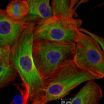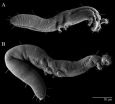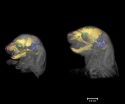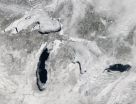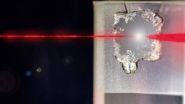(Press-News.org) An observational study from UCLA's Jonsson Comprehensive Cancer Center has found that prostate cancer patients who undergo robotic-assisted prostate surgery have fewer instances of cancer cells at the edge of their surgical specimen and less need for additional cancer treatments like hormone or radiation therapy than patients who have traditional "open" surgery.
The study, published online Feb. 19 in the journal European Urology, was led by Dr. Jim Hu, UCLA's Henry E. Singleton Professor of Urology and director of robotic and minimally invasive surgery in the urology department at the David Geffen School of Medicine at UCLA.
Although it is becoming more popular, robotic-assisted radical prostatectomy — the complete removal of the prostate using a robotic apparatus — remains controversial because there has been little evidence that it provides better cancer control than open radical prostatectomy, the traditional surgical approach, which is less costly.
In an effort to determine whether or not robotic surgery offered an advantage, Hu and his colleagues compared 5,556 patients who received robotic surgery with 7,878 who underwent open surgery between 2004 and 2009. Data was provided by the Surveillance, Epidemiology, and End Results–Medicare, a program of cancer registries that collect clinical and demographic information on people with cancer.
The researchers looked at the surgical margin status of the two groups, which is the amount of cancer cells at the edge of the removed prostate specimen. A positive margin — the presence of cancer cells at the edge — may result from cutting through the cancer and leaving some behind rather than cutting around the cancer completely. In prostate cancer, this has been shown to lead to a greater risk of recurrence and death from the disease.
The team also assessed the use of additional cancer therapies — a hormone therapy known as androgen deprivation, as well as radiation — after robotic surgery and open surgery.
They found that robotic prostate surgery was associated with 5 percent fewer positive margins (13.6 percent vs. 18.3 percent); this difference was greater for patients with intermediate and high-risk prostate cancer. Patients who had robotic surgery also had a one-third reduction in the likelihood of needing additional cancer therapies within 24 months after surgery.
Despite the greater up-front cost of robotic surgery, the findings show that the procedure may translate into less downstream costs and fewer side effects from radiation and hormone therapy, the researchers said.
INFORMATION:
UCLA's Jonsson Comprehensive Cancer Center has more than 240 researchers and clinicians engaged in disease research, prevention, detection, control, treatment and education. One of the nation's largest comprehensive cancer centers, the Jonsson center is dedicated to promoting research and translating basic science into leading-edge clinical studies. In July 2013, the Jonsson Cancer Center was named among the top 12 cancer centers nationwide by U.S. News & World Report, a ranking it has held for 14 consecutive years.
For more news, visit the UCLA Newsroom and follow us on Twitter.
UCLA study finds robotic-assisted prostate surgery offers better cancer control
2014-02-28
ELSE PRESS RELEASES FROM THIS DATE:
Let there be tissue-penetrating light: Scientists develop new nanoscale method to fight cancer
2014-02-28
Researchers from UCLA's Jonsson Comprehensive Cancer Center have developed an innovative cancer-fighting technique in which custom-designed nanoparticles carry chemotherapy drugs directly to tumor cells and release their cargo when triggered by a two-photon laser in the infrared red wavelength.
The research findings by UCLA's Jeffrey Zink, a professor of chemistry and biochemistry, and Fuyu Tamanoi, a professor of microbiology, immunology and molecular genetics, and their colleagues were published online Feb. 20 in the journal Small and will appear in a later print ...
Robert Avery, D.O., M.S.C.E., studies innovations to improve vision in children with tumors
2014-02-28
Robert Avery, DO, MSCE, of Children's National Health System and colleagues are establishing innovative approaches with technology and medication to improve the vision of young children who have visual pathway glioma, a type of brain tumor.
Most optic pathway gliomas cause vision loss in children between one and eight years of age. As many as 20 percent of children with neurofibromatosis type 1 -- a genetic disorder that occurs in 1 in every 4,000 births – may develop these tumors. It is estimated that nearly half of those children may experience vision problems from ...
Tackling tumors with space station research
2014-02-28
In space, things don't always behave the way we expect them to. In the case of cancer, researchers have found that this is a good thing: some tumors seem to be much less aggressive in the microgravity environment of space compared to their behavior on Earth. This observation, reported in research published in February by the FASEB Journal, could help scientists understand the mechanism involved and develop drugs targeting tumors that don't respond to current treatments. This work is the latest in a large body of evidence on how space exploration benefits those of us on ...
Worm-like mite species discovered on Ohio State's campus
2014-02-28
COLUMBUS, Ohio – It looks like a worm and moves like a worm – sort of. But it is a previously unidentified microscopic species of mite that was discovered by a graduate student on The Ohio State University campus.
Affectionately dubbed the "Buckeye Dragon Mite" by Ohio State's Acarology Laboratory, the mite is officially named Osperalycus tenerphagus, Latin for "mouth purse" and "tender feeding," in a nod to its complex and highly unusual oral structure.
This mite doesn't resemble a mythological winged dragon, but the snake-like Chinese dancing dragons that appear in ...
3-D imaging sheds light on Apert syndrome development
2014-02-28
Three dimensional imaging of two different mouse models of Apert Syndrome shows that cranial deformation begins before birth and continues, worsening with time, according to a team of researchers who studied mice to better understand and treat the disorder in humans.
Apert Syndrome is caused by mutations in FGFR2 -- fibroblast growth factor receptor 2 -- a gene, which usually produces a protein that functions in cell division, regulation of cell growth and maturation, formation of blood vessels, wound healing, and embryonic development. With certain mutations, this gene ...
GOES-West satellite eyes soggy storm approaching California
2014-02-28
A swirling Eastern Pacific Ocean storm system headed for California was spotted by NOAA's GOES-West satellite on February 28. According to the National Weather Service, this storm system has the potential to bring heavy rainfall to the drought-stricken state.
The storm was captured using visible data from NOAA's GOES-West or GOES-15 satellite on Feb. 28 at 1430 UTC/6:30 a.m. PST was made into an image by NASA/NOAA's GOES Project at NASA's Goddard Space Flight Center in Greenbelt, Md. The storm's center appeared as a tight swirl, with bands of clouds and showers already ...
NASA satellite sees great freeze over Great Lakes
2014-02-28
At night, as cold settles in, lake ice creaks and groans. It's been excessively cold, and I camped exposed on the snow-swept surface. Other than the lack of vegetation and the sounds at night, you'd never know you were on a lake. It feels like an empty plain. In some places, you see pressure ridges where ice has pushed into itself, sticking up like clear blue stegosaurus plates. -- Craig Childs
Author Craig Childs is not describing an Arctic lake. He's describing the bitterly cold and frozen scene on Lake Superior, during his February 2014 trek on the ice near the coast ...
Ultra-fast laser spectroscopy lights way to understanding new materials
2014-02-28
Scientists at the U.S. Department of Energy's Ames Laboratory are revealing the mysteries of new materials using ultra-fast laser spectroscopy, similar to high-speed photography where many quick images reveal subtle movements and changes inside the materials. Seeing these dynamics is one emerging strategy to better understanding how new materials work, so that we can use them to enable new energy technologies.
Physicist Jigang Wang and his colleagues recently used ultra-fast laser spectroscopy to examine and explain the mysterious electronic properties of iron-based superconductors. ...
Detection of water vapor in the atmosphere of a hot jupiter
2014-02-28
Although liquid water covers a majority of Earth's surface, scientists are still searching for planets outside of our solar system that contain water. Researchers at Caltech and several other institutions have used a new technique to analyze the gaseous atmospheres of such extrasolar planets and have made the first detection of water in the atmosphere of the Jupiter-mass planet orbiting the nearby star tau Boötis. With further development and more sensitive instruments, this technique could help researchers learn about how many planets with water—like Earth—exist within ...
Smoke in the water: Understanding the effects of smoke compounds on seed germination
2014-02-28
Although seemingly destructive, wildfires help to maintain biodiversity and are an important element of many ecosystems throughout the world. Not only do fires discourage non-native and invasive species from becoming established, but the quick release of nutrients, heat, and compounds found in ash and smoke play an important role in the life cycle of the native flora. For plants that are adapted to ecosystems where fire is a regular occurrence—such as savannas, grasslands, and coniferous forests—exposure to fire may initiate seed germination or enhance plant growth.
Recent ...
